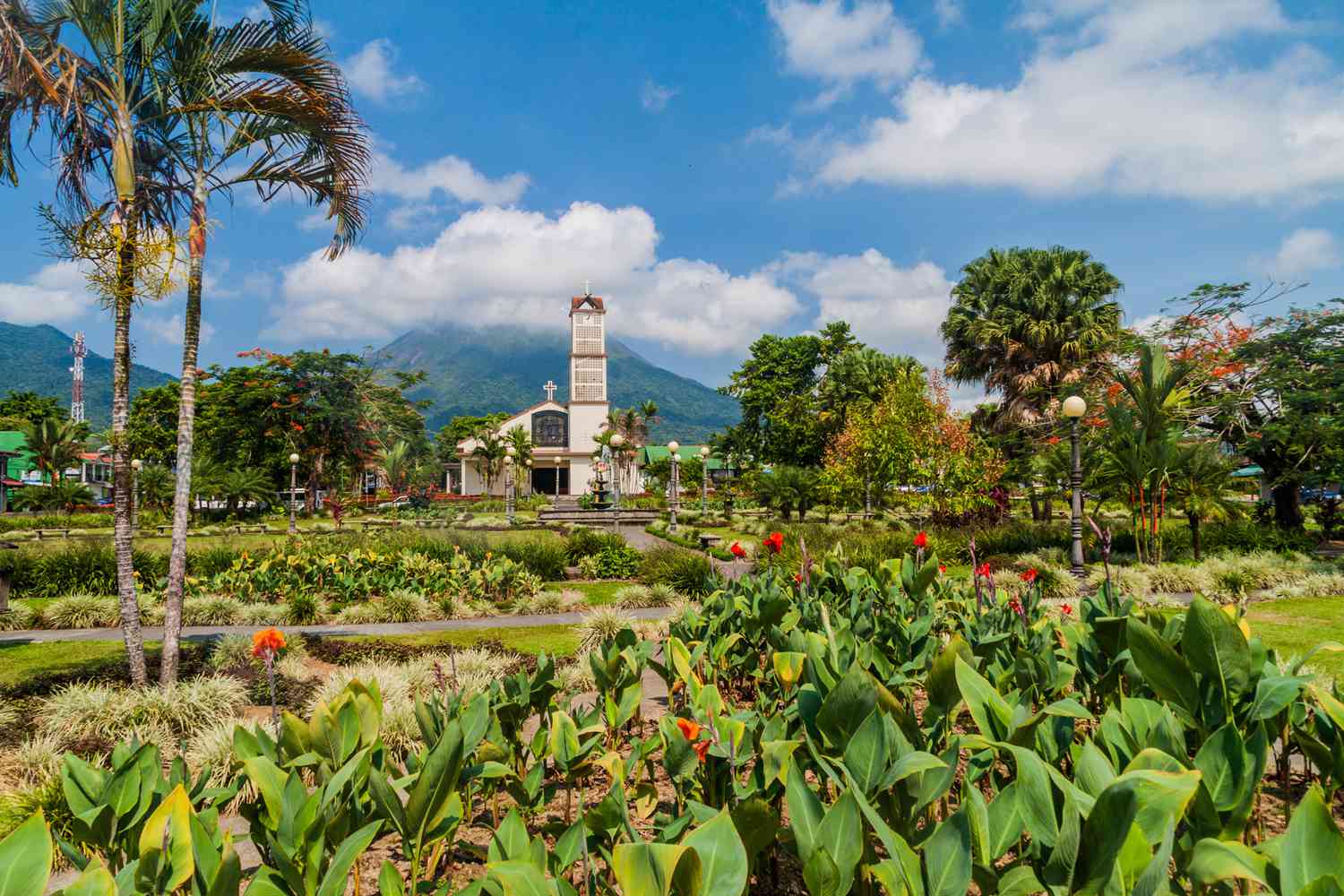Costa Rica, Travel + Leisure’s 2024 destination of the year, is known for lush rain forests, gorgeous beaches, fascinating wildlife, and its Nicoya Peninsula Blue Zone, where many residents live long, healthy lives, surpassing average life spans. Costa Rica is not only a perfect vacation destination, but it’s also an ideal place to retire.
International Living’s 2024 Annual Global Retirement Index, a comprehensive survey based on data and real-life experiences, named the Central American country the best place to retire. Climate, health care, biodiversity, outdoor activities, welcoming locals, and the pura vida lifestyle are some of its draws.
Katelynn Minott, CPA, CEO of Bright!Tax, tells T+L, “Costa Rica is a desirable place to retire for a number of reasons. Weather, cost of living, and pace of life come to mind immediately. One of the lesser-known benefits of Costa Rica is the government only levies taxes on Costa Rican-sourced income. Income from foreign sources — such as U.S. Social Security payments, a pension, or retirement plan distribution— is typically tax-free.”
A Costa Rican temporary residence permit for retirees allows holders, their spouses, and children under 25 (or older, if disabled) to live in the country for two years. Upon expiration, they may renew their visa if they continue to meet qualifications. After three years of living in Costa Rica, it’s possible to apply for permanent residence.
Additional considerations for retirees include medical facilities, infrastructure, things to do, expat communities, housing costs, transportation, and, for some, employment opportunities.
Recognizing that needs and preferences vary, we’ve put together this list of best places to retire in Costa Rica with input from travel experts, professional organizations, and my own travel experiences.
Santa Ana
Kryssia Campos/Getty Images
Pierre Gedeon, a T+L A-List advisor and GM at Costa Adventures, has lived in Costa Rica since 1997. According to Gedeon, climate and natural setting are important considerations when deciding where to live. “If you wish for a mild and cool climate, choose the Central Valley. Escazú and Santa Ana are at 3,000 to 4,500 feet elevation.” He adds, “This is also where the best infrastructure is as far as roads, amenities, security, etc. Temperatures there range between 75 and 85 degrees Fahrenheit during the day.”
International Living points out Santa Ana is conveniently located on the tollway next to the popular upscale suburb of Escazú. “Known as the Valle del Sol (Valley of the Sun), this year-round temperate-weather town features a professional 18-hole golf course (and three other courses nearby), a bustling downtown area, shopping, restaurants, and mid-range to upscale developments nestled in the mountains,” reads the website. It also mentions the Sunday morning farmers market, noting “Expats and locals alike put this weekly event on their calendar because it is not just about buying groceries, it is also part of the social scene.”
Guanacaste
Located in the northwestern section of the country along the Pacific, Guanacaste offers a warm, dry climate with beaches, resorts, and convenient access to Daniel Oduber Quirós International Airport. A large expat population enjoys the laid-back lifestyle and availability of activities, according to International Living. The site also estimates rent for a one-bedroom studio is around $600 a month, while a two-bedroom, two-bathroom ocean-view condo can run about $1,300 a month. According to Numbeo, a three-course meal for two at a mid-range restaurant costs around $43.
Samantha Wei of Mytanfeet, a Costa Rica travel information website, tells T+L, “Playas del Coco is a small but growing fishing village in the Gulf of Papagayo. Many North American retirees love Coco due to the year-round sunny skies, high temperatures, and plethora of fantastic ocean activities in the Papagayo Gulf.” Gedeon mentions the town of Las Catalinas, saying, “[It’s beautiful and luxurious — built from scratch — a great option if you have the budget for this place.”
I spent several days in Guanacaste, and I experienced the forests, beaches, and wildlife. It was exciting to drive along the road and see monkeys watching us from the trees, iguanas sunning, colorful birds chirping, and coatimundi looking for food on the beach. From opulent residences at the Four Seasons Resort Peninsula Papagayo to modest beachfront homes in Tamarindo and Playas del Coco, the Guanacaste area offers a range of housing options for retirees.
Grecia
Kryssia Campos/Getty Images
This popular destination for expats and retirees lies at an altitude of 3,000 to 5,000 feet, with a comfortable year-round climate. According to International Living, “Nestled among forests, mountains, and farms are villages where expats have been living side-by-side with Costa Ricans for many decades. As a result, supportive communities have formed, providing schools, clubs, sports, and a huge range of cultural activities.” Residents can get to the beach in one hour when they need a change from mountain living.
“The town is popular among North American retirees thanks to the fresh mountain weather, cooler temperatures, and strong Costa Rican small town culture,” says Wei. International Living also comments on Grecia as a retirement destination, noting, “For health care, there are multiple pharmacies, each with a nurse on staff. The town has many general practitioners to choose from, as well as some specialists. There are at least three dentists and a couple of optometrists, too.”
Grecia is an hour away from San José, where there are cultural activities, restaurants, shopping, and urban amenities. Grecia also offers weekly farmers markets, a shopping mall with a food court, and a movie theater.
Heredia
Artush/Getty Images
Gedeon mentions this area near San José, saying, “If you wish for a cooler climate with rural flair that’s still close to the capital, the highlands of Heredia are the place. It’s just 30 to 40 minutes to town and the real estate is quite a bit cheaper than Escazú or Santa Ana.”
International Living points out, “Retirees in Heredia will enjoy the ongoing balmy, spring-like temperatures, thanks to the pleasant elevation.” In addition to what the city of San José has to offer, “the neighboring mountain area that turns more rural, coupled with an economy that has welcomed over 30 international companies, shows how exciting this city can be.”
Quepos
sestovic/Getty Images
The harbor town of Quepos on Costa Rica’s Pacific coast is known for sport fishing, beaches, and its location as the gateway to Manuel Antonio National Park, where visitors enjoy wildlife, hiking, and remote stretches of sand. In an April 2024 article for Bright!Tax, Minott wrote, “Visitors and locals alike love to lounge on the beaches, hike through the trails, and spot monkeys, sloths, and colorful birds, making Quepos a nature lover’s dream come true.”
International Living notes on its site, “Being at sea level, Quepos is usually quite warm year-round, so you will want to have air conditioning, at least in your bedrooms, which will increase already expensive electric bills a good bit.” There are supermarkets, restaurants, retail shops, and fresh seafood arriving at the docks daily.
Hospital Metropolitano has a branch in the marina, a full-service clinic associated with the large hospital in San José. The town is walkable, so no car is needed, and local buses and taxis are inexpensive.
Arenal Region
Adrian Rudd/Travel + Leisure
The Lake Arenal region is a popular tourist destination for wildlife viewing, hiking, and water sports, in addition to being home to a growing expat community. According to International Living, “Most expats are concentrated around Nuevo Arenal, a small village on the northern shore of the lake at about the midway point. Here, you’ll find everything you need for daily life: pharmacy, medical clinic, bank, gas station, grocery stores, restaurants — perfect for everyday shopping and errands.”
The article also mentions that expats can be found in and around the towns of Tilaran, San Luis, and Tronadora. “Though Arenal is increasingly popular among retirees and other expats, buying or renting a home remains affordable, especially considering the inspiring lake views and quiet rural setting. Several gated communities can be found along the narrow two-lane road that circumnavigates the lake.”









